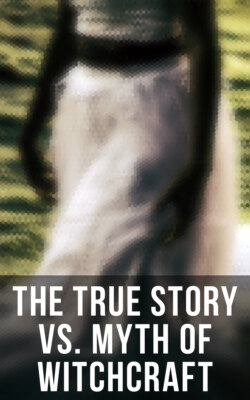Читать книгу The True Story vs. Myth of Witchcraft - William Godwin - Страница 120
На сайте Литреса книга снята с продажи.
The Sorceress of Virgil.
ОглавлениеProdigies are plentifully distributed through the earlier parts of the Roman history; but it is not our purpose to enter into a chronological detail on the subject. And in reality those already given, except in the instance of Tullus Hostilius, do not entirely fall within the scope of the present volume. The Roman poets, Virgil, Horace, Ovid and Lucan, give a fuller insight than the Latin prose-writers, into the conceptions of their countrymen upon the subject of incantations and magic.
The eighth eclogue of Virgil, entitled Pharmaceutria, is particularly to our purpose in this point. There is an Idyll of Theocritus under the same name; but it is of an obscurer character; and the enchantress is not, like that of Virgil, triumphant in the success of her arts.
The sorceress is introduced by Virgil, giving direction to her female attendant as to the due administration of her charms. Her object is to recal Daphnis, whom she styles her husband, to his former love for her. At the same time, she says, she will endeavour by magic to turn him away from his wholesome sense. She directs her attendant to burn vervain and frankincense; and she ascribes the highest efficacy to the solemn chant, which, she says, can call down the moon from its sphere, can make the cold-blooded snake burst in the field, and was the means by which Circe turned the companions of Ulysses into beasts. She orders his image to be thrice bound round with fillets of three colours, and then that it be paraded about a prepared altar, while in binding the knots the attendant shall still say, “Thus do I bind the fillets of Venus.” One image of clay and one of wax are placed before the same fire; and as the image of clay hardens, so does the heart of Daphnis harden towards his new mistress; and as the image of wax softens, so is the heart of Daphnis made tender towards the sorceress. She commands a consecrated cake to be broken over the image, and crackling laurels to be burned before it, that as Daphnis had tormented her by his infidelity, so he in his turn may be agitated with a returning constancy. She prays that as the wanton heifer pursues the steer through woods and glens, till at length, worn out with fatigue, she lies down on the oozy reeds by the banks of the stream, and the night-dew is unable to induce her to withdraw, so Daphnis may be led on after her for ever with inextinguishable love. She buries the relics of what had belonged to Daphnis beneath her threshold. She bruises poisonous herbs of resistless virtue which had been gathered in the kingdom of Pontus, herbs, which enabled him who gave them to turn himself into a hungry wolf prowling amidst the forests, to call up ghosts from the grave, and to translate the ripened harvest from the field where it grew to the lands of another. She orders her attendant to bring out to the face of heaven the ashes of these herbs, dele and to cast them over her head into the running stream, and at the same time taking care not to look behind her. After all her efforts the sorceress begins to despair. She says, “Daphnis heeds not my incantations, heeds not the Gods.” She looks again; she perceives the ashes on the altar emit sparkles of fire; she hears her faithful house-dog bark before the door; she says, “Can these things be; or do lovers dream what they desire? It is not so! The real Daphnis comes; I hear his steps; he has left the deluding town; he hastens to my longing arms!”
